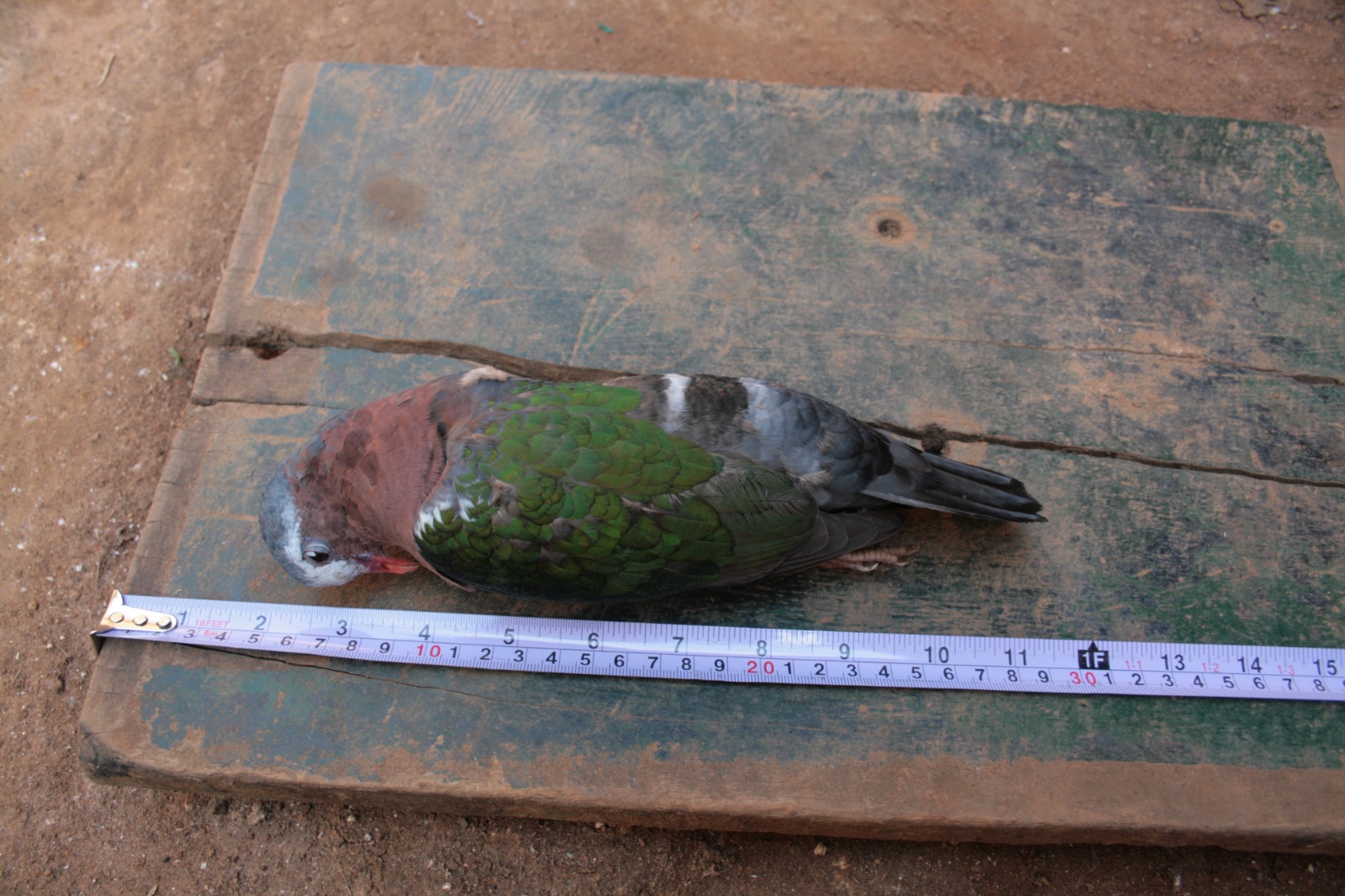
Greenfield Factory of Karupannya Rangpur Limited sets a dimension to the working environment in this context, which leads the workers to visit the factory on their weekends for recreation. Conventionally, industries are a kind of space where we can’t think of any other quality than working, but this factory unit is designed with a different vision. The whole compound as well as the workplace is designed to make the workers feel at home. Workers around the compound always feel so relieved due to its design nature. The design idea was to create a kind workspace that is so close to the earth and also integrate the climatic resources at the utmost level into the whole compound.
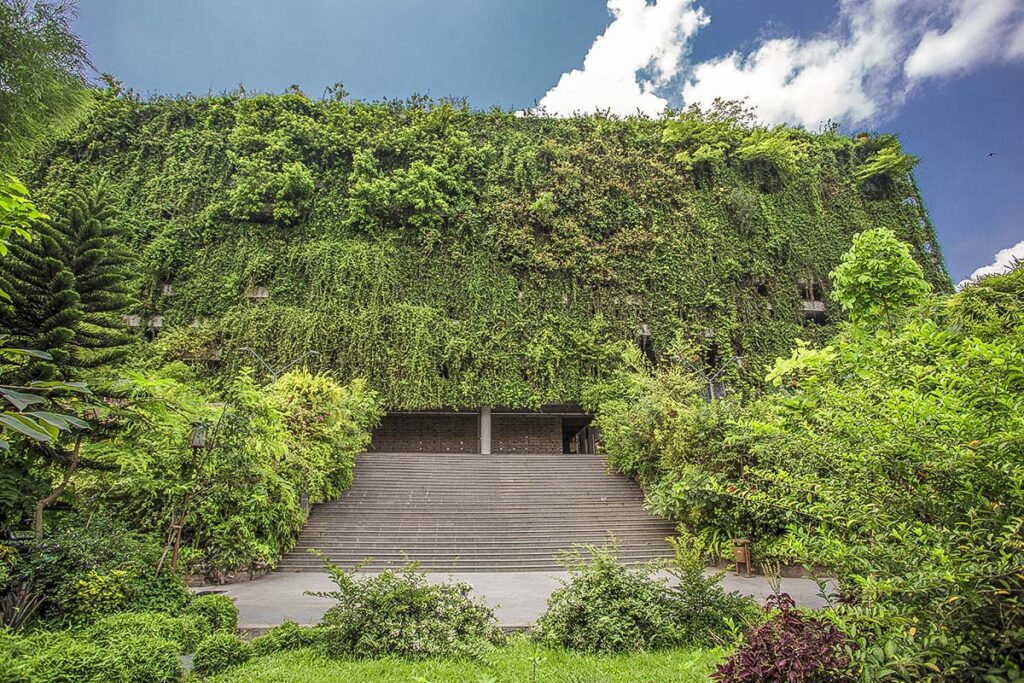
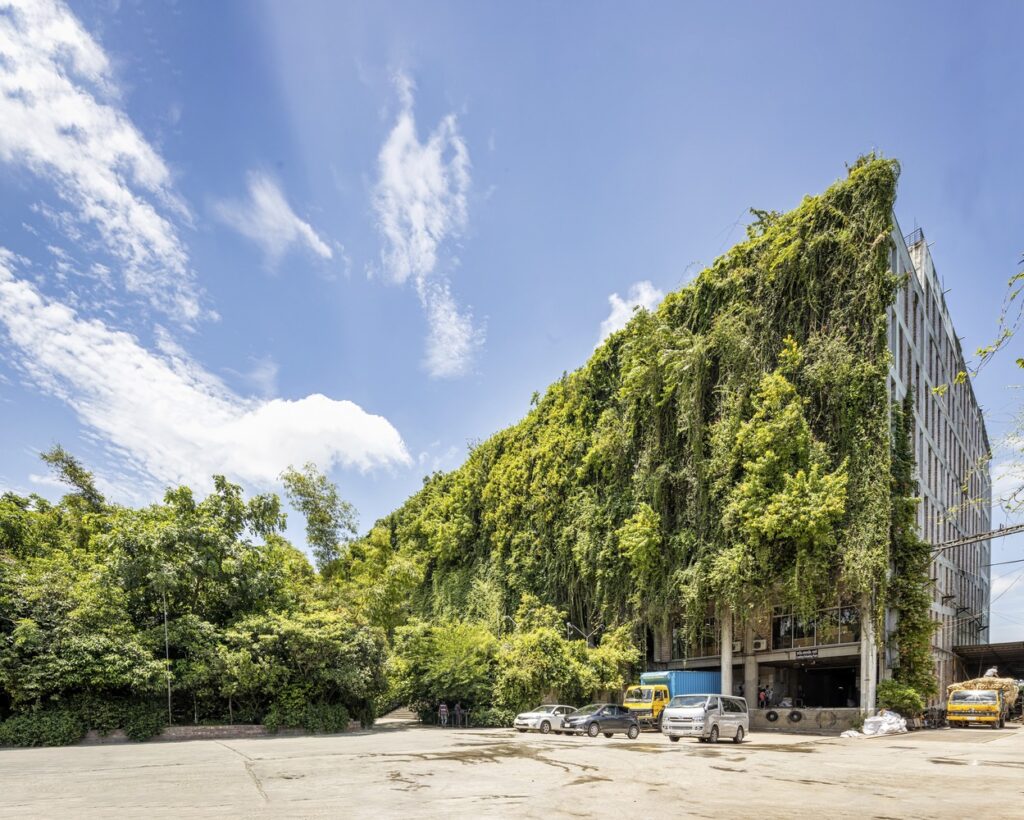

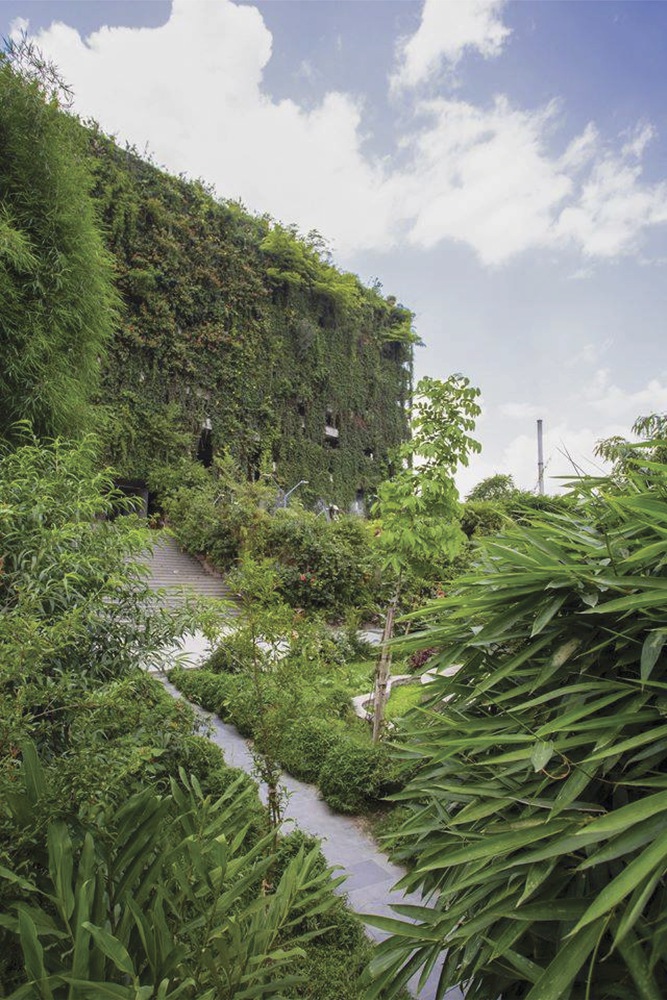
The factory is located in Robertsongonj, Rangpur, Bangladesh. Rangpur is in the Tropical Monsoon Climatic Zone, according to the Köppen-Geiger climate classification. This Greenfield factory unit started its journey in 1991 in Rangpur and presently manufactures carpets and other woven floor coverings, the majority of which are shipped to the European Union, the United States, and Asia. The entire site area of the project is 14170 square metres, and the overall built-up area is 24850 square metres. Their main factory building is a seven-story structure with a footprint of 3820 square metres. The project’s construction phase began in 2013 and began functioning in early 2017.
Bangladesh has a tropical climate with moderate winters from November to March and hot, humid summers from March to June. As it is located in a monsoon climatic zone, the monthly mean temperature of the project site is over 18 °C, and humidity remains high throughout the year. The climate-responsive design of the green field factory building for Karupannya Rangpur Ltd. is a pioneering example in this region. As sustainable measures and climate responsiveness were the primary concerns of the project, it achieved perpetual beauty as well as new dimensions while responding to the primary concerns.
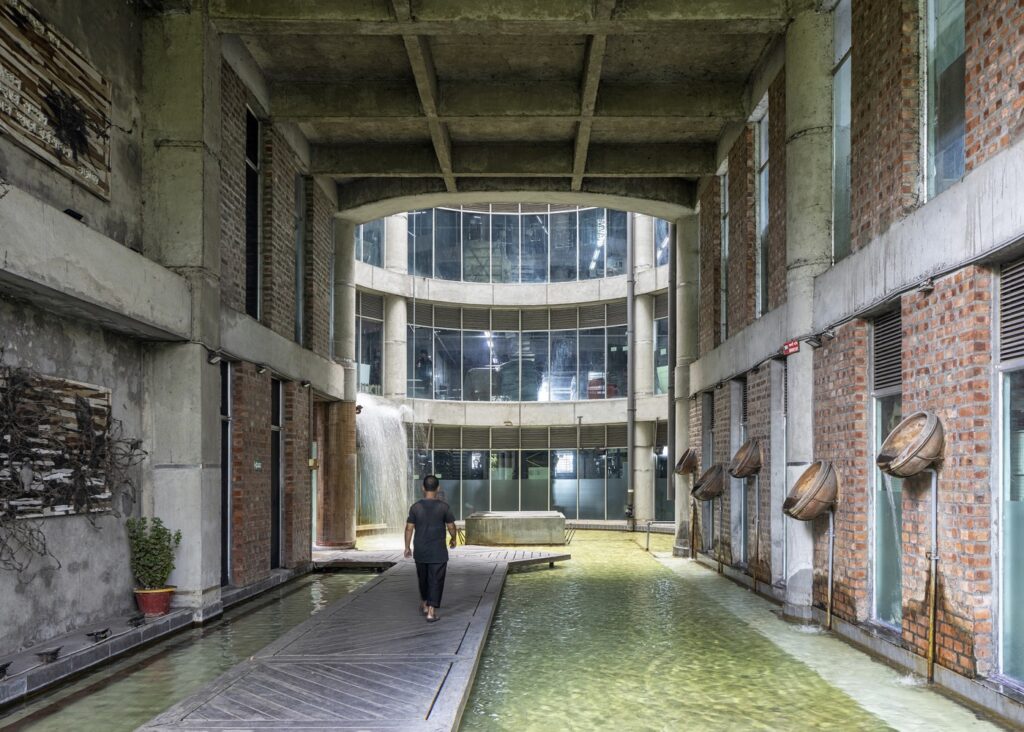


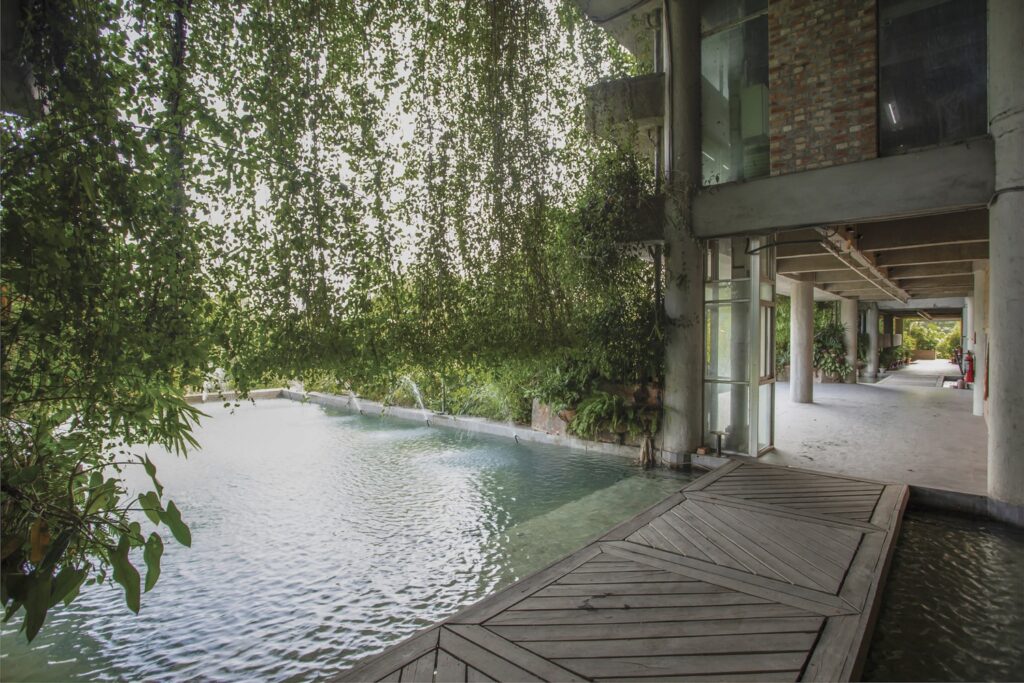
The factory is designed as an energy-efficient and climate-responsive structure that can save up to 40% on energy consumption. Energy efficiency, water efficiency, optimal use of daylight, plantation, and eco-system preservation are the sustainable design elements being implemented. The south, north, and east facades are kept open to let the air circulate through the structure, keeping the working climate naturally beneficial. Moreover, the front face on the south side includes four-foot-deep apertures and verandas, which are similarly covered with layers of plants. The northward breeze blowing through the plants and water reservoirs enters the building through four circular voids, keeping the internal spaces 5 degrees cooler than the outside. The whole complex has no air conditioning and very few numbers of electric fans. Soft natural daylight enters the indoor spaces through the plants of the façade and multiple central atriums. Strategically created vertical garden reduces solar heat gain and helps to improve air quality. Also, plants were chosen according to the monsoon climate to support the ecosystem.
Buildings frequently disrupt the relationship between humans and nature, as well as the surrounding ecosystem. The design of the main factory building successfully established a close bond between humans and nature while supporting the ecosystem of the building’s surroundings. The idea was implemented to support the climatic scopes as well. Overall design emphasises the rural contextual archetype, like courtyards, gardens, water bodies, and traditional climatic solutions, as well as preserving rural vibes. Exterior facades are cast concrete with a finish of lush green. Interior walls are of locally produced exposed brick and concrete. The walls for product display and retail areas in the Display rooms are decorated with clay sculptures and ambient lighting. There are thousands of small and big sculptures on the entire premises. Miniature female sculptures decorate the stairs and interior walls. Workers in this factory feel highly enthusiastic and motivated to work in such a beautiful and environmentally friendly workplace.
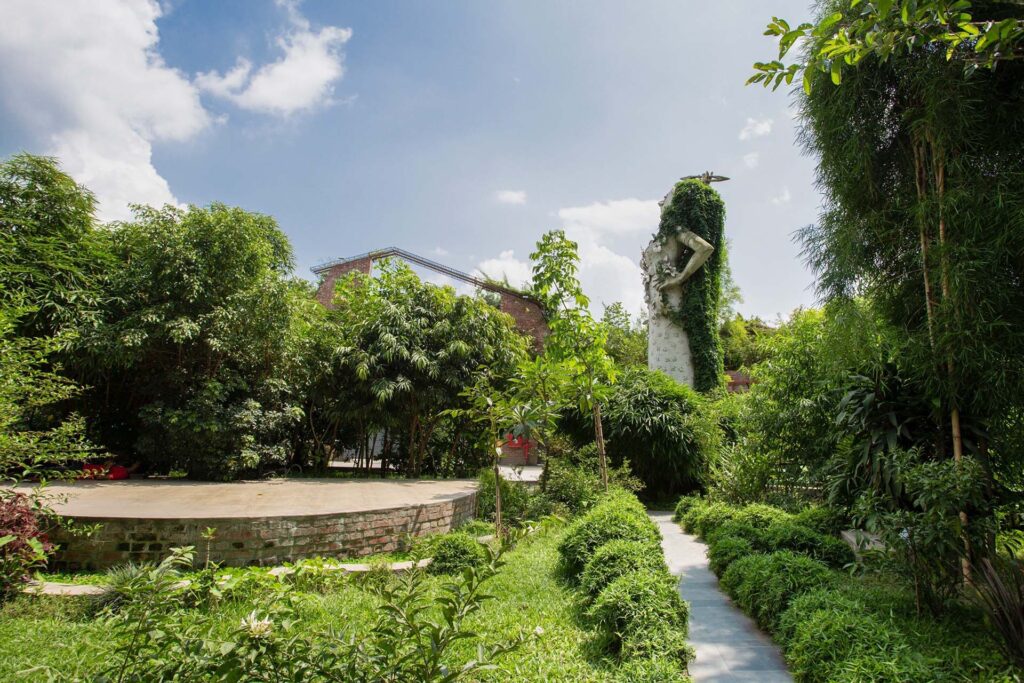
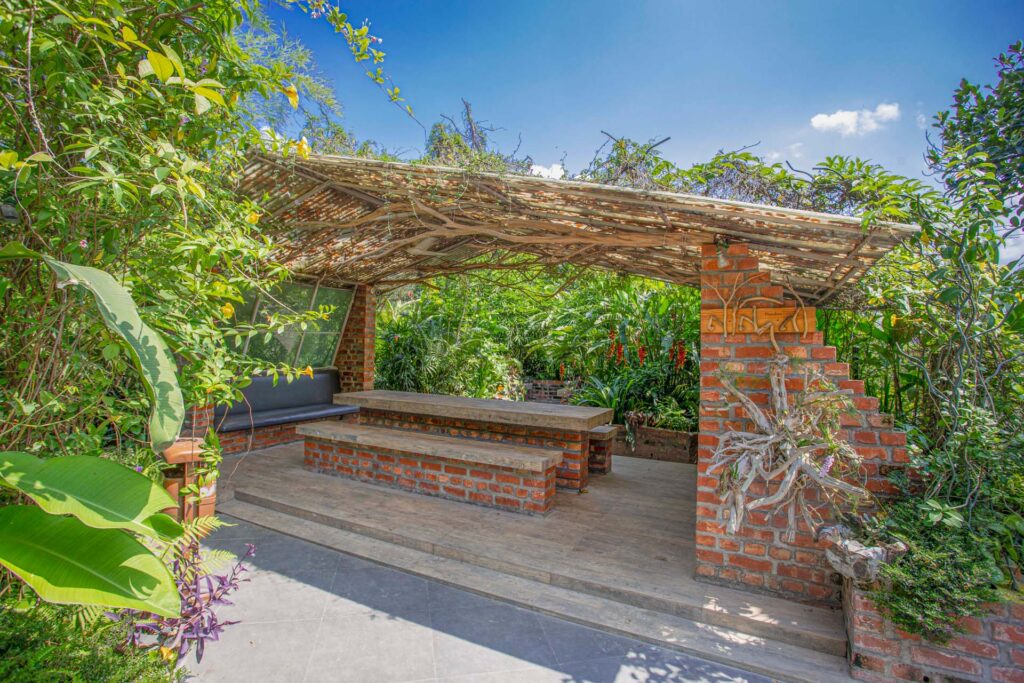
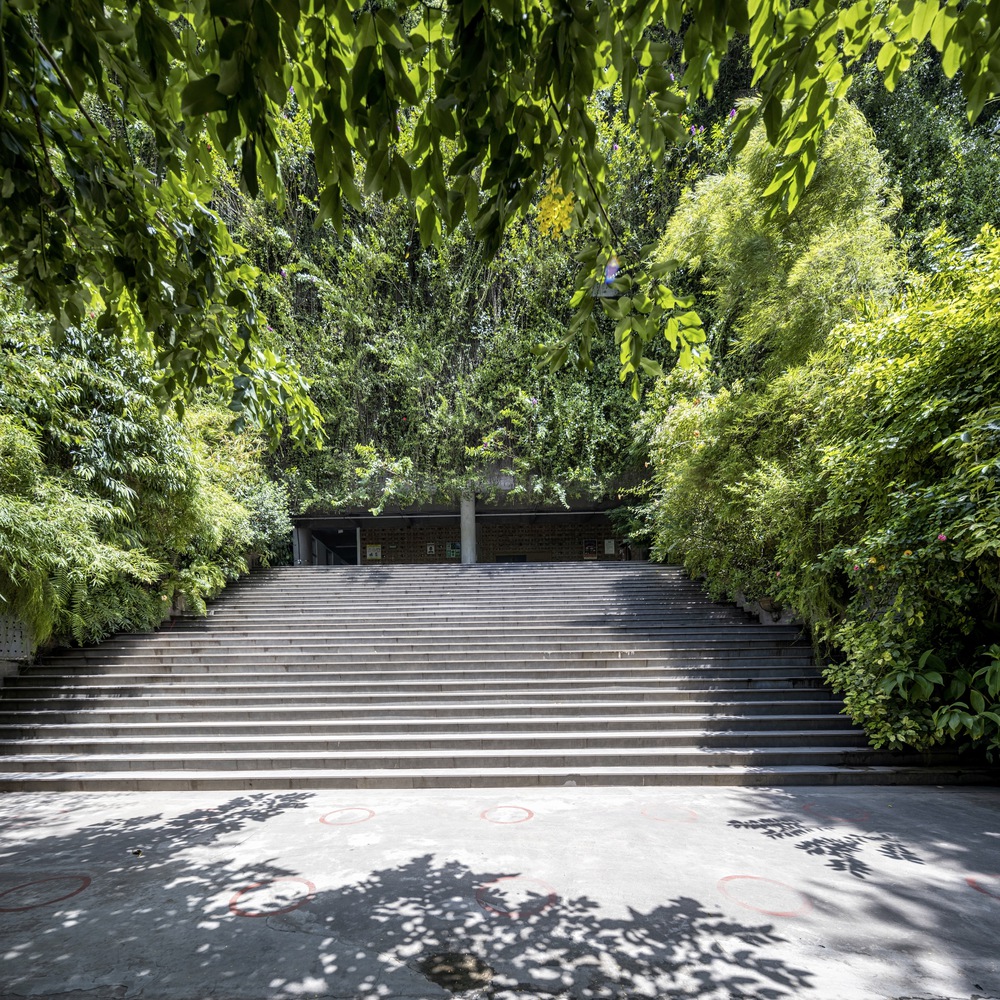
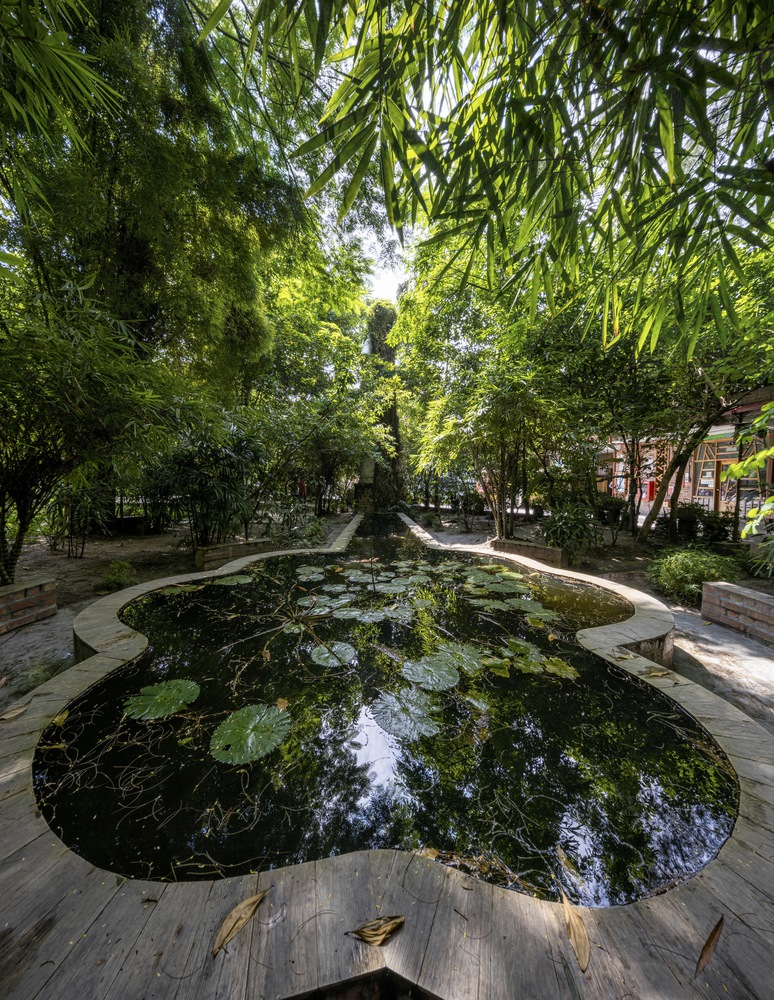
Considering the climatic scopes, four enormous water bodies are designed at the southern front façade of the building entrance, from where natural air flow comes. Passing through the central green and over the water bodies, air temperature is naturally reduced through evaporative cooling. From the outermost to the deepest portion of the mass, the cool air is gradually exhausted through the voids to the roof above. On the other hand, water becomes naturally ionised when in contact with the air through oxidation and is ready to use, eliminating any need for a chemical water treatment plant. Used water is treated in ETP and reused again. During monsoon, these water bodies are also used for rainwater harvesting. However, during the monsoon, the moist weather helps the greenery flourish to its full potential, and therefore air travelling towards the interior is always dryer and much more comfortable to use.

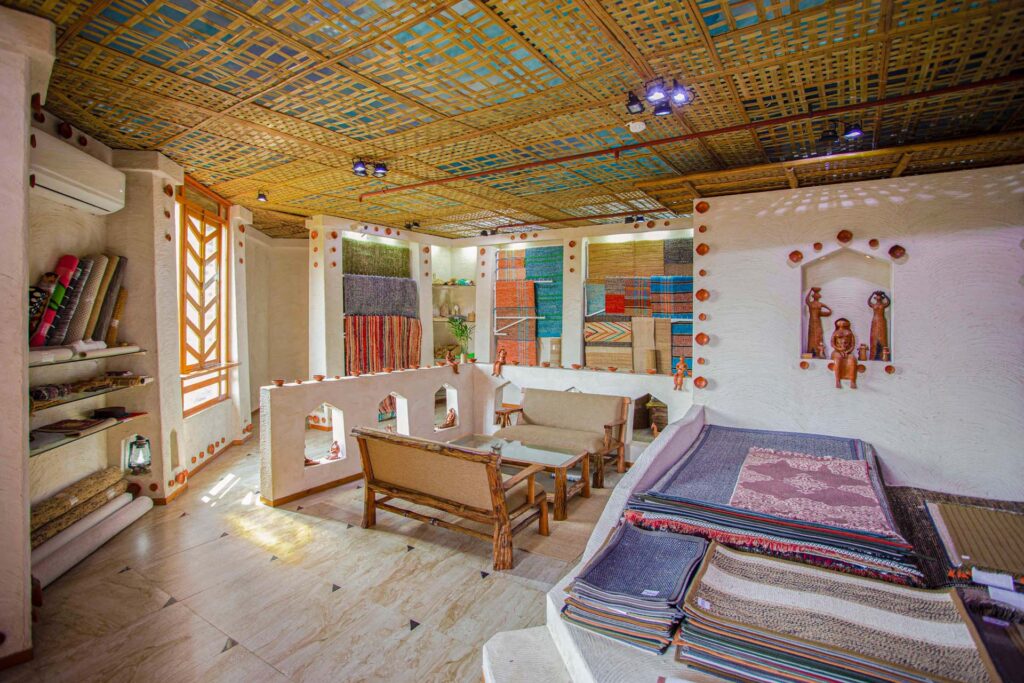
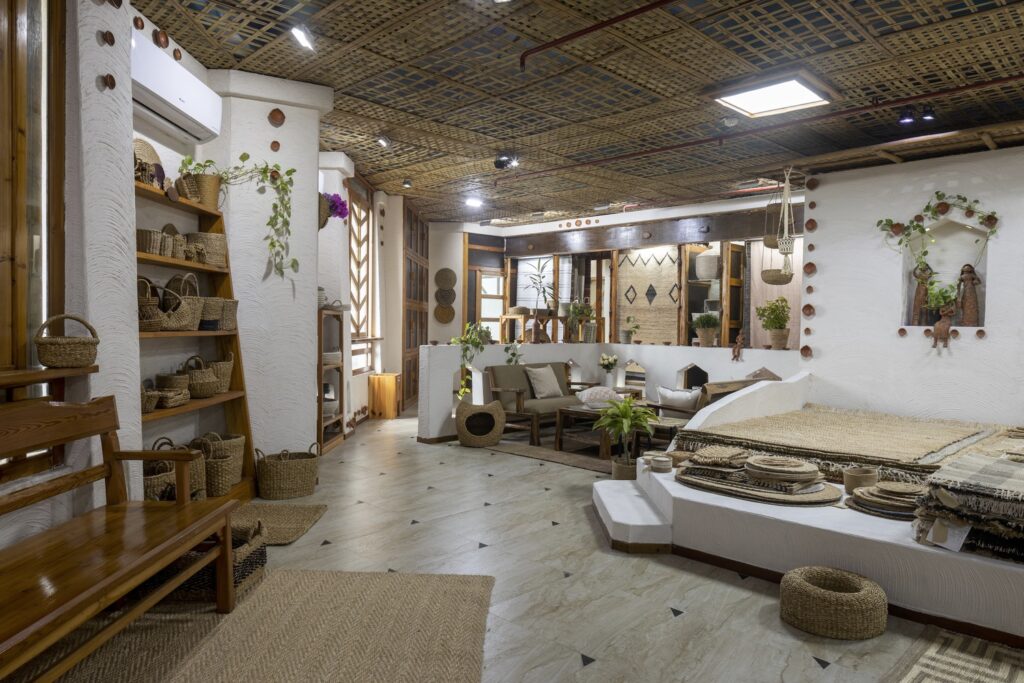
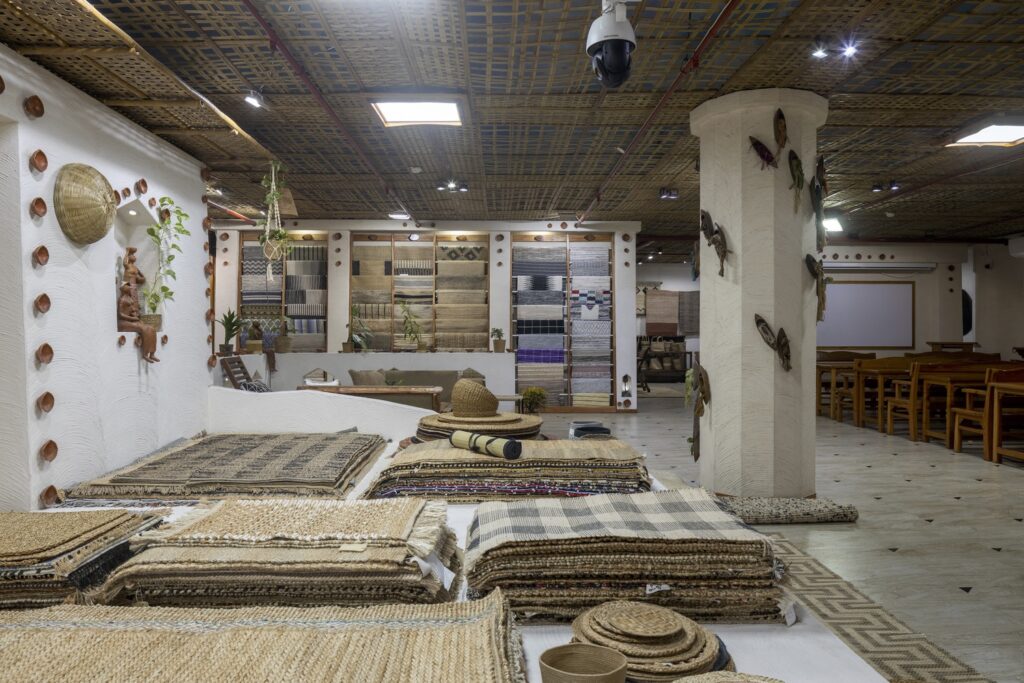
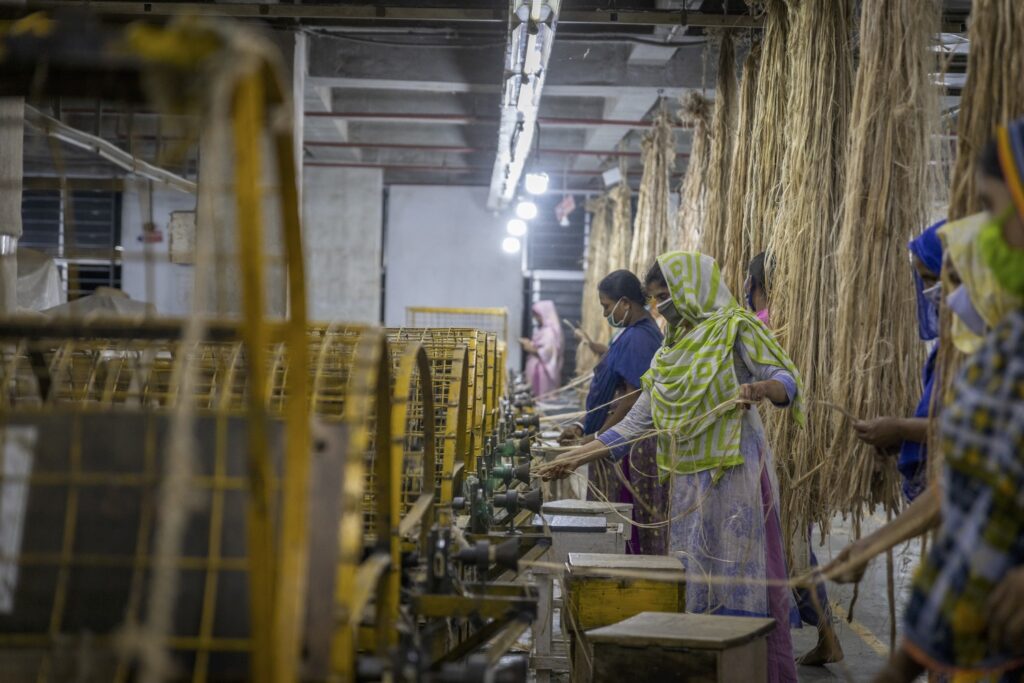
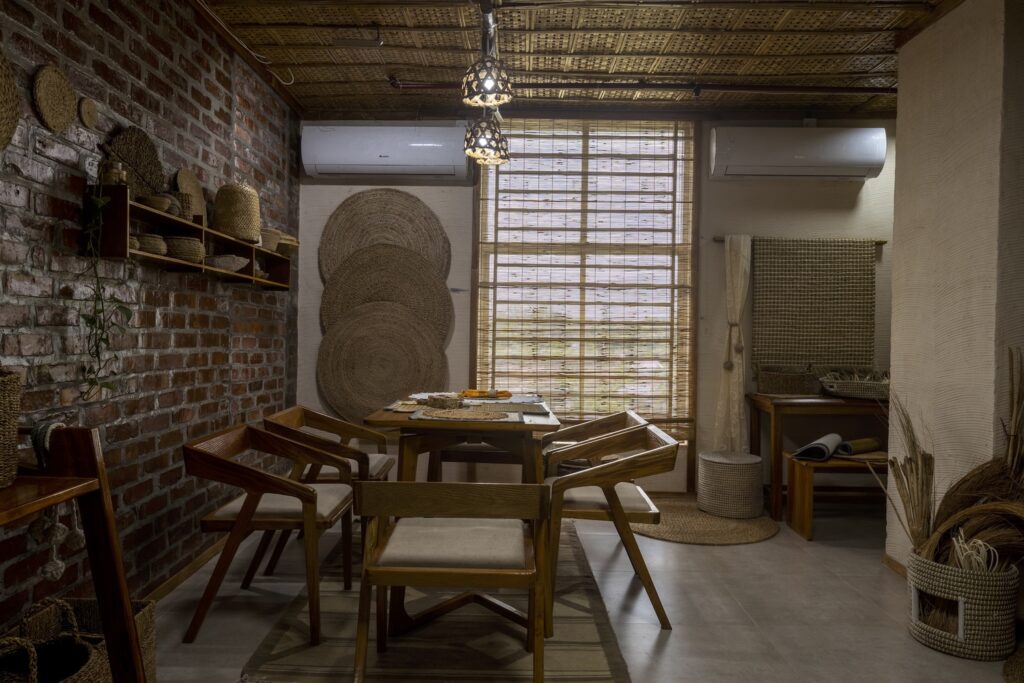
This Greenfield Factory is not just a factory or workplace to the workers, it’s rather like a home to them. A home of their own with a touch of green and earth. This unit is a combination of workplace and recreation space for the mass workers. A glimpse of the context of this region. The vertical green stalks bending upon the water bodies, touching the water slightly, reminds of the identical image of the ponds in rural Bangladesh.
Project Drawings:

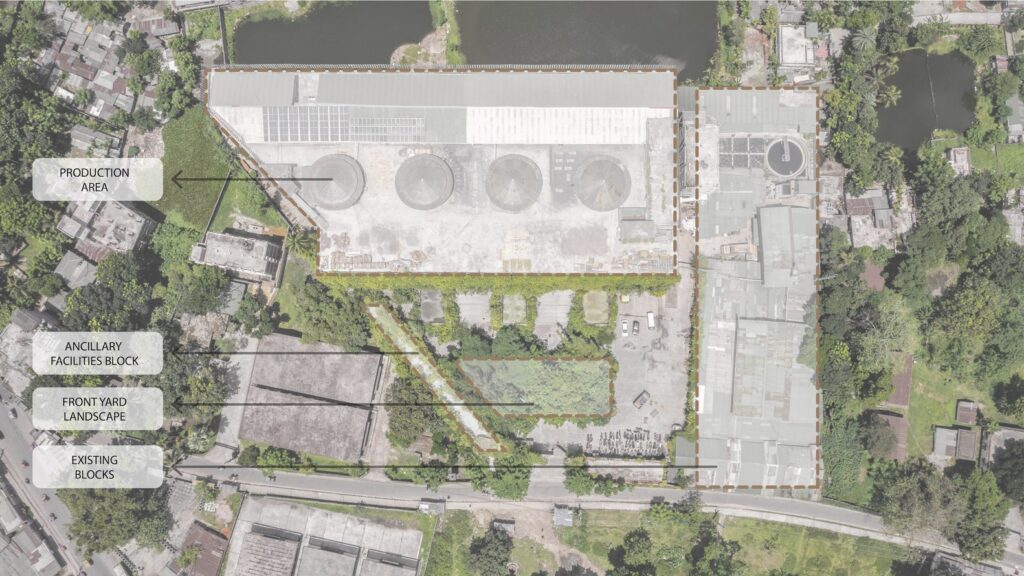


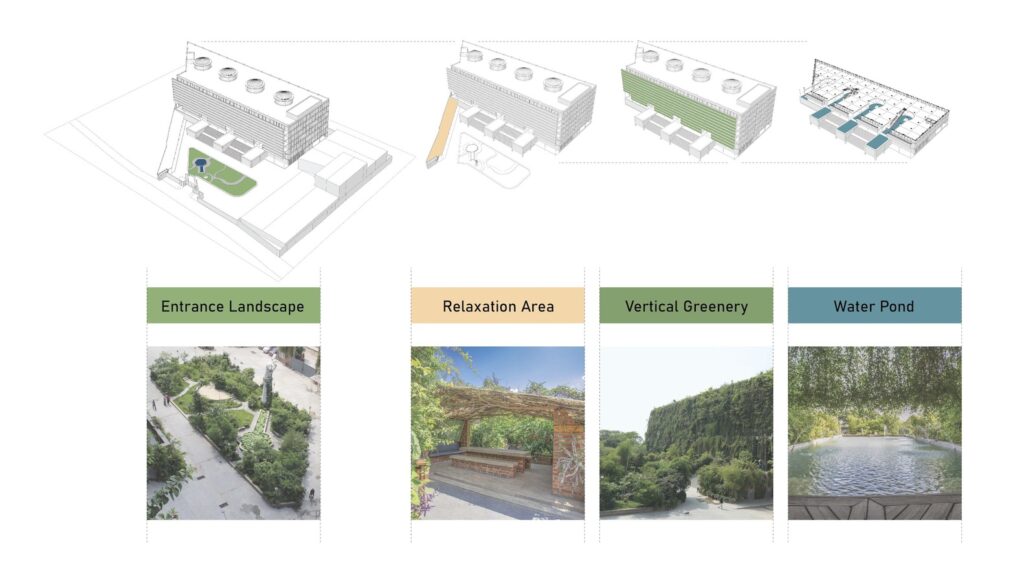
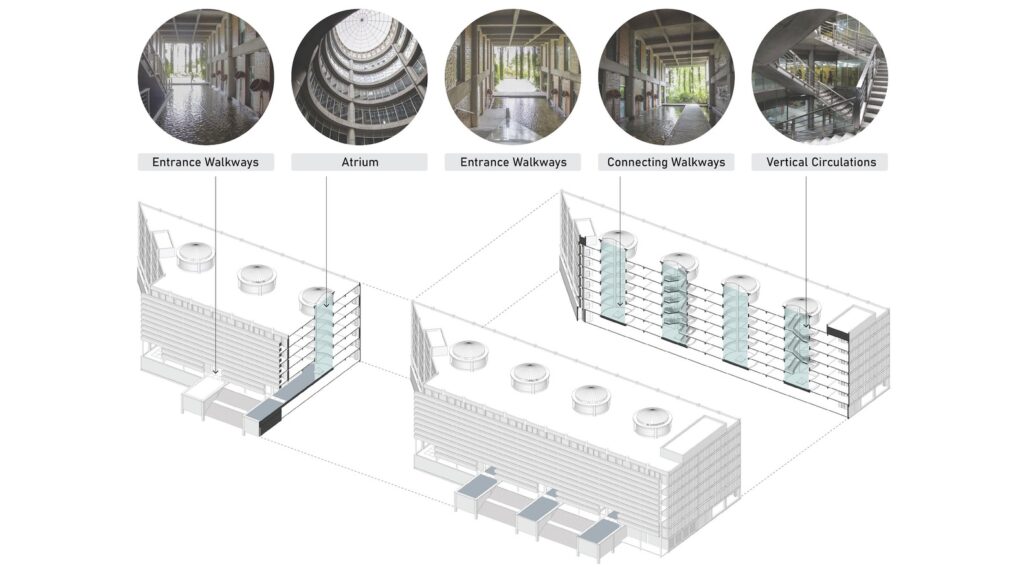

Project Details:
Name: Greenfield Factory
Location: Rangpur, Bangladesh
Area: 14,450 sq. m.
Year: 2016
Design Firm: Nakshabid Architects
Chief Architect: Bayejid Mahbub Khondker
Landscape & Interior: Saidul Huq Juice
Structural Engineer: Sabbir Siddique
Electrical Engineer: Subodh Chandra Biswas
Plumbing Engineer: Prodip Kumar Haldar
Photographs Credit: Bayejid Mahbub Khondker, Junaid Hasan Pranto, City Syntax






